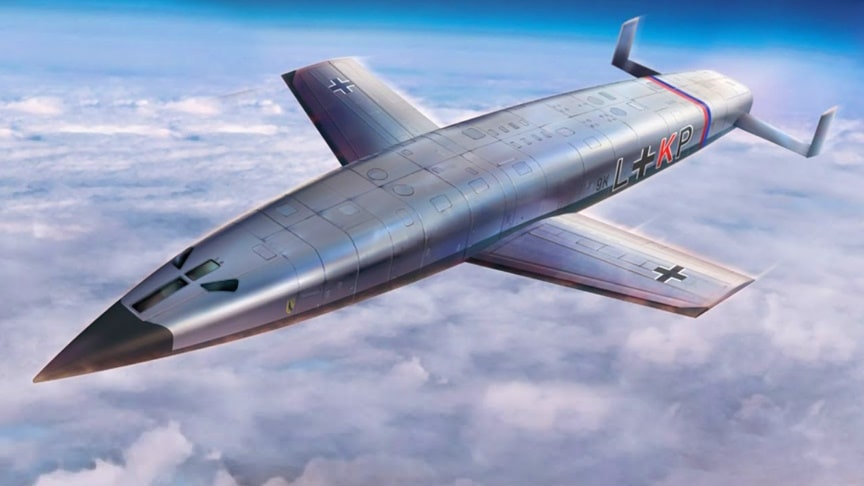The silver bird was a design for a liquid-propellant rocket-powered sub-orbital bomber produced by Eugen Sänger and Irene Bredt in the late 1930s for The Third Reich. The design incorporated new rocket technology and the principle of the lifting body, foreshadowing future development of winged spacecraft such as the X-20 Dyna-Soar of the 1960s and the Space Shuttle of the 1970s.
source/image: Found And Explained
The Silbervogel was intended to fly long distances in a series of short hops. The aircraft was to have begun its mission propelled along a 3 km (2 mi) long rail track by a large rocket-powered sled to about 1,930 km/h. Once airborne, it was to fire its own rocket engine and continue to climb to an altitude of 145 km, at which point it would be travelling at about 21,800 km/h.
It would then gradually descend into the stratosphere, where the increasing air density would generate lift against the flat underside of the aircraft, eventually causing it to “bounce” and gain altitude again, where this pattern would be repeated.
Advertisement
Because of aerodynamic drag, each bounce would be shallower than the preceding one, but it was still calculated that the Silbervogel would be able to cross the Atlantic, deliver a 4,000 kg bomb to the continental United States, and then continue its flight to a landing site somewhere in the Empire of Japan–held Pacific, a total journey of 19,000 to 24,000 km.











